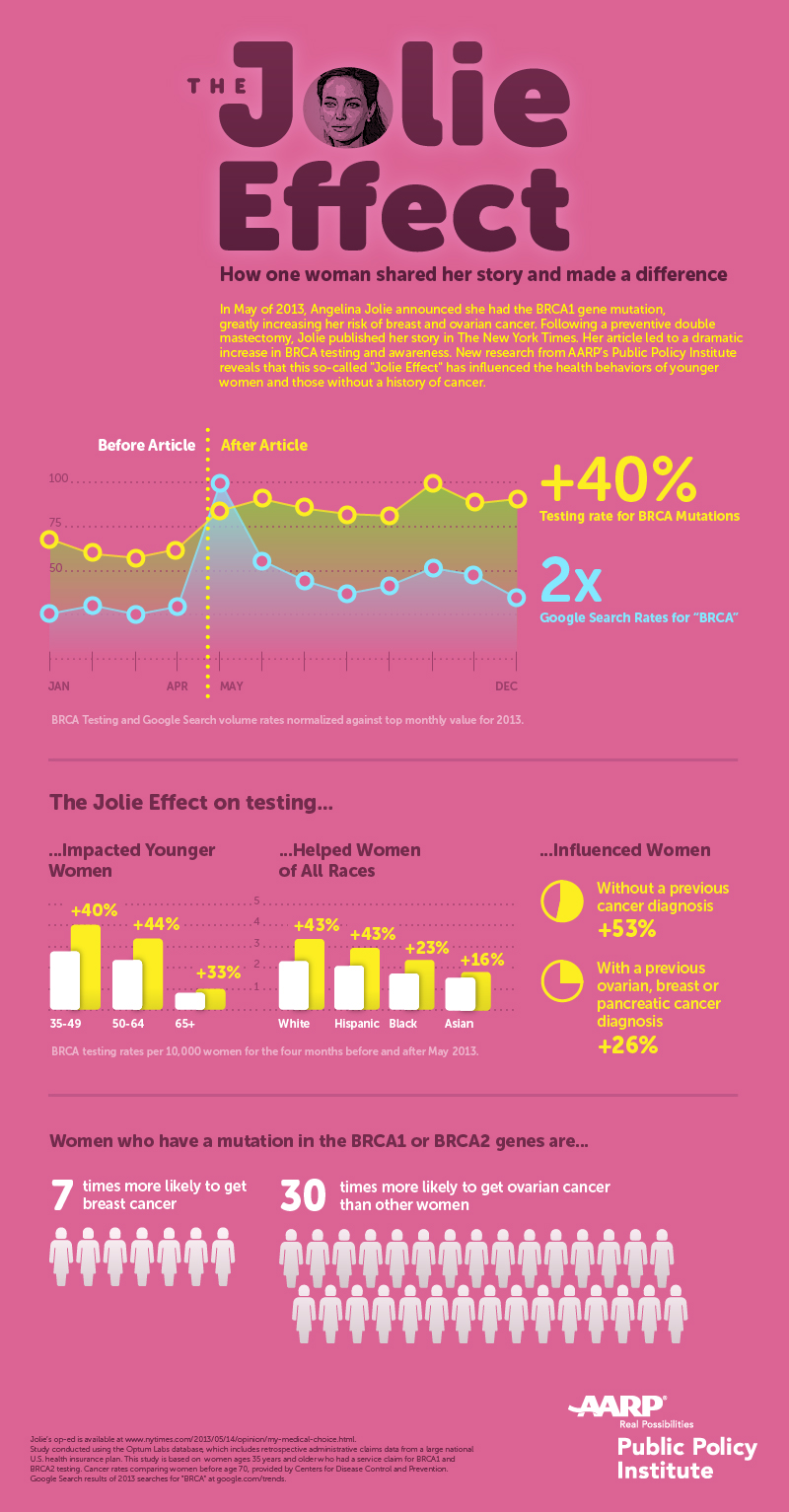The Jolie Effect

BRCA testing rates jumped nearly 40 percent after actress Angelina Jolie announced that she carried the gene mutation and opted for an elective double mastectomy.
A new study by AARP Public Policy Institute found that after Jolie announced she had the BRCA1 gene mutation in May 2013, the Google search rates for “BRCA” doubled and the testing rate for gene mutations climbed 40 percent, from an average of 350 tests per week to an average of 500 tests.
BRCA1 and BRCA2 gene mutations are the most common cause of hereditary breast cancer.
Women who have mutated BRCA1 or BRCA2 genes are seven times more likely to get breast cancer and 30 times more likely to get ovarian cancer than other women, according to the study.
The study also found the so-called “Jolie Effect” influenced the health behaviors of younger women and those without a history of cancer.
Prior to Jolie’s announcement, women with a cancer diagnosis had more BRCA tests than women who didn’t. During the week of her announcement, though, the increase in testing among women who did not have a cancer diagnosis was nearly twice that of women with a diagnosis, according to the study.
The number of women without a previous cancer diagnosis who underwent BRCA testing increased 53 percent after the announcement. The number of women with a previous ovarian, breast or pancreatic cancer diagnosis who sought BRCA testing increased by 26 percent, according to the study.
Women ages 50 to 64 had the highest BRCA testing increase rate (44 percent), followed by women ages 35 to 49 (40 percent), according to the study.
